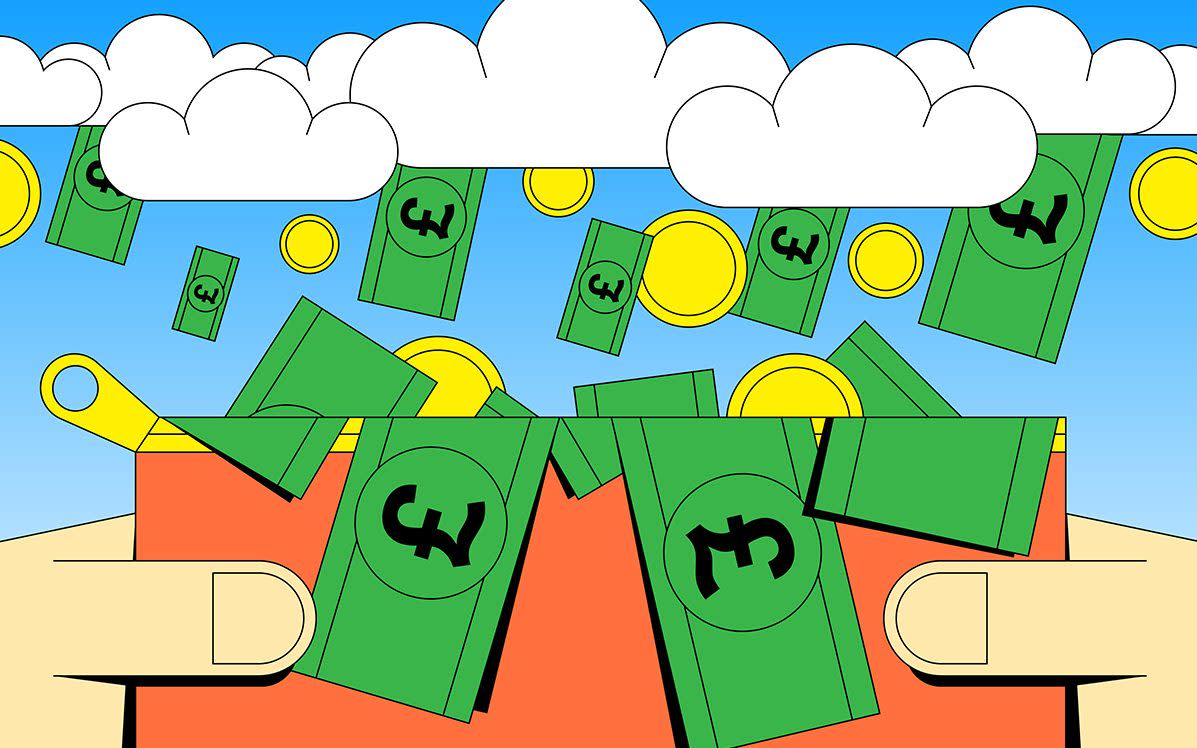Britons save cash at record rate as lockdown curbs spending

The fate of the UK’s recovery will hinge on how quickly nervous households return to spending after saving almost a third of their income during the national lockdown, economists have warned.
The Office for National Statistics’ more detailed breakdown of the April-June quarter - the worst decline on record - showed average household savings jumping to a record high of 29.1pc after the shuttering of all but non-essential shops.
Household spending over the quarter sank by a record £80.5bn - nine times the size of the previous biggest ever quarterly fall - as Britons were forced to cut back spending on restaurants and hotels, air fares and recreation.
The money has instead been funneled into savings accounts and despite a return to spending over the summer, the Bank of England is concerned that fears over rising unemployment as the furlough ends could dampen growth by keeping precautionary savings high.
JP Morgan economist Allan Monks said: “Key to the outlook is the extent to which the saving rate will remain higher than usual due to voluntary saving, which reflects household caution over spending. It is too early to judge where things are settling, but the still very low level of consumer confidence suggests the saving rate is unlikely to return to its pre-pandemic level of just over 6pc.”
The UK's saving spree even outdid the typically cautious Germans during the second quarter, as Germany saw a comparatively smaller savings rate of 20.1pc over a similar period. That said, the Germans went into lockdown earlier than the UK, which pushed up its first quarter savings ratio to 16.5pc. On average Europe's thriftiest economy had a savings rate of almost 11pc in 2019, compared to below 7pc in the UK.
Despite slight upward revisions, the ONS estimates the economy sank by 19.8pc between April and June, wiping out 17 years of economic growth. The UK economy is 21.8pc smaller than it was at the end of last year.
But thanks to the effect of the furlough scheme, as well as support for self employed workers, employee compensation “only” fell 2.2pc over the quarter. This drop in itself was the biggest fall since the financial crisis in 2008, but the damage would have been far worse without the extensive support now being wound down by Chancellor Rishi Sunak.
Bank of England figures this week showed some slowing in the pace of panic savings after household deposits rose £5.2bn in August, around the average of pre-pandemic levels and less than a third of the average £17.2bn squirrelled away by households between March and June.
But unemployment is forecast to rise to around 7.5pc by the end of 2020 and the prospect of much less generous support is likely to herald a return to caution, according to Samuel Tombs, chief UK economist at Pantheon Macroeconomics.
He said: “The combination of a high saving rate and a decline in labour income likely will ensure that households’ spending, and indeed overall GDP, are approximately 5pc below their pre-Covid level in the final quarter of this year.”
Another alarm bell for the economy underlined by the figures is the collapse in business investment, which was already a trend before Covid-19 thanks to lingering uncertainty over Brexit. Business investment tumbled by 26.5pc - again the biggest fall on record - but firms remain cash-conscious while the course of the pandemic remains unclear. The Bank of England’s Decision Maker Panel data, which is more current than the ONS figures, has shown investments a third lower in August than they would have been if not for Covid-19.
Investec chief economist Philip Shaw said: “A very solid bounce back in business investment in the third quarter looks much less likely than it does for consumption.”
There could be a glimmer of good news in the figures though, which economists say offer a highly technical rejoinder to the accusations that the UK has taken the biggest economic hit from Covid-19.
This is due to the way the ONS measures Government spending based on health and education outputs. While cash, or “nominal”, spending rose 15.6pc due to the money being poured into the fight against the pandemic, the volume of government consumption actually fell by 14.6pc, due to the closure of schools and the cancellation of routine NHS activity to focus on Covid-19.
According to the ONS the difference between the extra cash poured in and reduced output suggests a drastic 35pc jump in the implied price of Government goods, which feeds into the difference between the 19.8pc fall in real GDP and the 14.5pc fall in “cash” GDP over the quarter.
Nobody is suggesting government prices have soared that quickly though, and this statistical quirk is likely to be ironed out in the quarters ahead, according to Berenberg’s senior UK economist Kallum Pickering.
He said: “We would not be surprised if the ONS dramatically reduces its estimate of the government spending deflator in subsequent quarters as public sector activity returns to normal. Compared to other advanced economies, this will make the UK upswing look relatively fast.”

 Yahoo News
Yahoo News 
